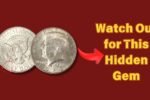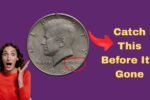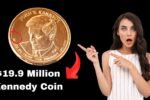During World War II, something special happened with American coins. A regular five-cent coin, called the Jefferson nickel, became a collector’s favorite. This happened between 1942 and 1945.
Because of the war, the U.S. Mint changed how the coin was made. This made the coin rare and important. Today, these nickels can be worth a lot of money.
The Story Behind the Wartime Nickel
The Jefferson nickel first came out in 1938. It replaced the Buffalo nickel. But when WWII started, things changed fast.
Nickel was needed to make war equipment. So, the Mint had to use a different mix of metals. From October 1942 to December 1945, they used:
- 56% copper
- 35% silver
- 9% manganese
This new metal mix gave the coin its nickname—“wartime silver nickel.” It still said 5 cents, but now it’s worth much more to collectors.
How to Identify a Wartime Nickel
You don’t need to be an expert to spot one of these coins. Just look at the back of the coin.
Above Monticello (Thomas Jefferson’s house), there is a big mint mark. This was the first U.S. coin to show a large mint mark like this.
Quick facts to spot one:
| Feature | Details |
| Years Made | 1942 (some), 1943, 1944, 1945 |
| Mint Marks | P (Philadelphia), D (Denver), S (San Francisco) |
| Mint Mark Location | Above Monticello dome |
| Metal Mix | 35% silver, 56% copper, 9% manganese |
The “P” mark was used for the first time ever. This makes it even more special.
Why Collectors Love These Coins
There are a few reasons why these coins are so popular today:
- War Connection: The coin tells a story from WWII.
- Silver Content: Each coin has real silver in it.
- Hard to Find in Perfect Shape: Clean, sharp coins are rare.
- Affordable Start for Collectors: It’s not too expensive to begin collecting.
All these things make the coin both valuable and interesting.
High-Value Coins and Rare Errors
Most wartime nickels are cheap. But some rare ones have sold for thousands.
Here are a few examples:
| Coin Type | Value Range |
| 1943-P Doubled Eye Error | $1,500–$3,000+ |
| 1942-P (Silver) | $75–$400 |
| 1945-D Full Steps (MS-67) | $1,000+ |
| 1943-S MS-68 | Up to $3,600 |
| Full Uncirculated Set | $250–$600 |
One rare type is the 1943-P Doubled Eye. A mistake in the die made Jefferson’s eye look doubled. This error makes the coin very valuable.
How to Check If You Own One
It’s easy to check your change or coin collection. You might already have one without knowing it.
Here’s what to do:
- Look for dates between 1942 and 1945.
- Flip the coin and check for a large mint mark above Monticello.
- Use a magnifying glass to check for special errors or full steps.
- Notice the coin’s color—it might look different due to silver.
These steps can help you find a hidden treasure.
How to Take Care of and Sell It
Found a wartime nickel? Great! But don’t clean it. That lowers its value.
Here’s what you should do:
- Protect It: Put the coin in a plastic holder.
- Don’t Polish: Cleaning damages the surface.
- Get It Graded: Use services like PCGS or NGC.
- Where to Sell: Try coin shows, auctions, or online coin websites.
Taking care of the coin helps you get the best price.
Final Thoughts
The wartime Jefferson nickel is more than a coin. It’s a piece of history. With silver in it and links to World War II, it has become a special find for collectors.
If you have some old coins lying around, take a second look. That small five-cent piece might be worth a lot more than you think.
FAQs
What years were wartime nickels made?
Between 1942 and 1945.
What metal is in wartime nickels?
35% silver, 56% copper, 9% manganese.
Where is the mint mark on these nickels?
Above Monticello on the back.
Are all wartime nickels valuable?
Some are, especially rare errors or high grades.
Should I clean my old nickels?
No, cleaning lowers value.




